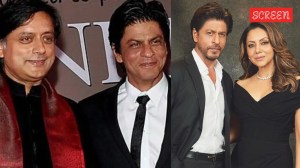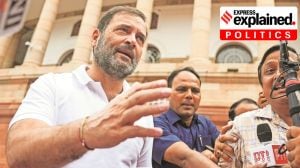Click here to follow Screen Digital on YouTube and stay updated with the latest from the world of cinema.
The eventful 1947 was a breakthrough year for Dilip Kumar, Raj Kapoor and Indian cinema
Vikramaditya Motwane's Jubilee has been billed as a love letter to the golden age of Bollywood. With the 10-part series premiering on Prime Video, we turn the clock back to the year 1947 and the extraordinary men and women who shaped that era.
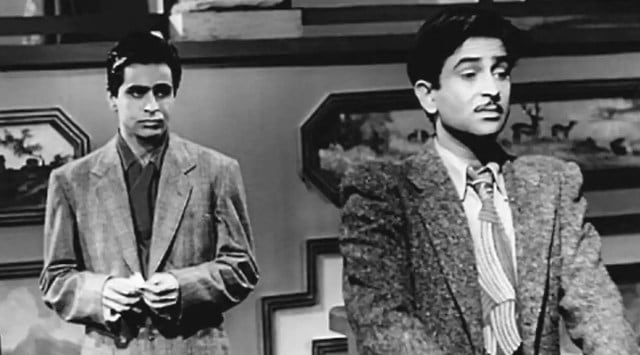 Dilip Kumar and Raj Kapoor in a still from 149's Andaz.
Dilip Kumar and Raj Kapoor in a still from 149's Andaz. The year 1947 remains a watershed in Indian history. On the eve of August 15, even as the nation woke up to hard-won “life and freedom” (to purloin words from Jawaharlal Nehru’s celebrated speech) after nearly a century of British rule, the short-lived ecstasy of Independence was quickly followed by the unimaginable horrors of Partition. In every possible way, 1947 serves as a bittersweet reminder of freedoms earned and lives lost. At such politically fraught times, one imagines nobody would have cared for what was happening in Hindi cinema of that era. Intriguingly, 1947 was a rather eventful year for Bollywood.
While Ashok Kumar, Naseem Banu, Noor Jehan, KL Saigal, Nargis, Suraiya, Shobhana Samarth, Motilal, Sohrab Modi, Prithviraj Kapoor and Prem Adib were a few of the greatest names who dominated the 1940s after the advent of the talkies with Ardeshir Irani’s Alam Ara (1931), 1947 saw the emergence of a new generation of younger stars who would go on to define the coming decades, especially the 1950s. For starters, 1947 was a major breakthrough for Dilip Kumar. Even though he had earlier debuted with Jwar Bhata (1944) it was the runaway success of Jugnu that marked a turning point in his fledgling career. In the following years, ‘Nehru’s hero’ — as Meghnad Desai called him — would establish himself as a household name with Shaheed, Mela and Andaz in rapid succession. In many ways, Raj Kapoor’s story, too, has its beginnings in the same year. The future Showman had made a powerful first impression with his maiden directorial effort Aag in 1948 and tasted stardom with Barsaat in 1949 but you have to rewind to 1947 in order to trace his leading man origins. This almost happened by accident. Although as Prithviraj Kapoor’s son it was a given that he would some day face the camera (and he did, as a child artiste way back in the 1930s, like nearly everyone in the Kapoor clan had at some point in their lives) it was Kidar Sharma’s Neel Kamal that somewhat unexpectedly turned the clapper boy of the unit into the film’s hero. Sharma, as Kapoor later recalled, was moved by the “depth and pain” of his intense blue eyes. Kapoor went even further to admit that “RK Films was born in 1947,” thus acknowledging Neel Kamal’s significant contribution to his career.
The late Baby Tabussum got her first big break the same year, with her signing up three films while it was a banner year for Madhubala and Begum Para. Lover of all-things-golden-age, Sanjay Leela Bhansali created history when he forced the latter out of retirement for a parting shot in Saawariya. Ironically, while all these fresh faces were making their way onto the screen, one legendary innings was coming to a tragic end. As a singer-actor, KL Saigal had enjoyed immense success through his New Theatres heyday but his move to Bombay proved to be a death knell for him. The Devdas star had taken to the bottle towards the end of his life. His last completed film, Parwana, was released in 1947 but he passed away around the same time, leaving behind a glorious legacy of soulful songs and performances that should make him a permanent star in any Bollywood walk of fame.
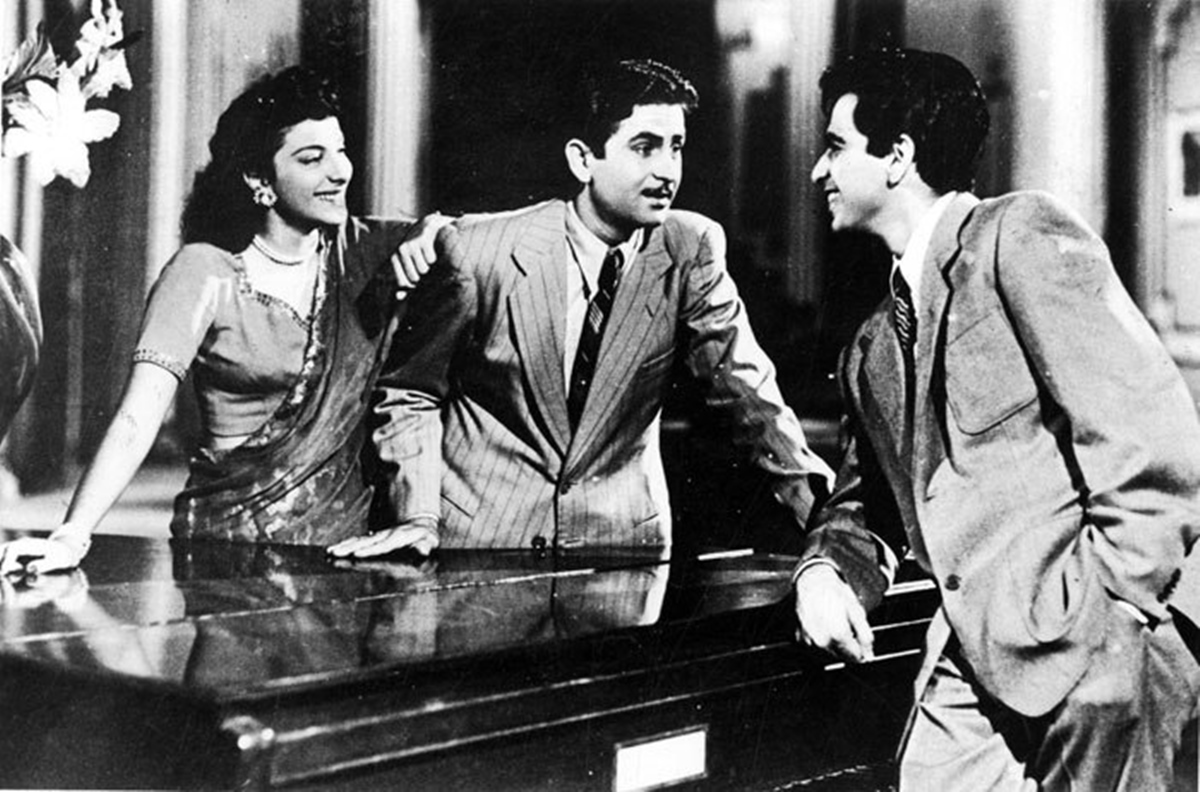 Nargis, Raj Kapoor and Dilip Kumar in Andaz.
Nargis, Raj Kapoor and Dilip Kumar in Andaz.
The 1930s and 40s bore witness to the steady proliferation of the studio system (Ranjit Movietone, Imperial Film Company, Filmistan and Kohinoor Film Company, to name a few). Presiding over these dream factories, homegrown studio moguls like Himanshu Rai, Shashadhar Mukherjee, Chandulal Shah and Dwarkadas Sampat manufactured magic for an Indian audience not yet used to cinema as an established art form. Still, studios like the iconic Prabhat Film Company (led by V. Shantaram with a reformist frame of mind) built their brand by producing films based on mythological and socially bold subject matter throughout the ’30s. On the other hand, Wadia Movietone gave us action spectacles, often spearheaded by the irrepressible Fearless Nadia who dazzled the audiences with her daredevil stunts and badass chutzpah. By the 1940s, the influence of Parsi theatre and Urdu adab could still be felt, as reflected in hit titles like Sikandar, Omar Khayyam, Mumtaz Mahal, Humayun, Zeenat etc. One of the more exciting and dynamic characters of this era was Devika Rani whose extraordinary myth and mystique seems to have inspired Vikramaditya Motwane’s period drama Jubilee, due to premiere on Prime Video. As the powerful boss lady who called the shots at Bombay Talkies, she made stars out of Ashok Kumar, Dilip Kumar, Madhubala and Mehmood, among others. She herself started out as an actress and in a short time, gained notoriety for a four-minute kissing scene that scandalized Indian audiences in 1933. Three years later, she tossed out some more shockwaves through movie halls after playing a lower-caste girl in love with an upper class boy (Ashok Kumar) in Achhut Kannya.
Saadat Hasan Manto, who was those days moonlighting in Bollywood as a screenwriter-cum-roving reporter, once observed that Devika Rani and Ashok Kumar “looked right together,” eventually becoming India’s hot favourite on-screen couple. With his debonair looks and style, Kumar was by far the most famous star of 1940s Bollywood. His taboo-breaking Kismet from 1943 has become best known as a movie of many firsts — first blockbuster of Hindi cinema, first time a hero is portrayed with darker shades and first cinematic outing to use the lost-and-found formula that seems to have provided some of Bollywood’s true originals (Manmohan Desai, Yash Chopra, Nasir Hussain) with much-needed ammunition. In one of his sketches, Manto offers a glimpse into Kumar’s popularity and goodwill by narrating an anecdote about them once driving past a Muslim neighbourhood at the height of Hindu-Muslim tension during the Partition. Though Manto was nervous about the incident taking a violent turn the star was left unharmed by the rabble-rousing crowd. After all, the man behind the wheel was none other than Ashok Kumar. While Dadamoni’s car was guided to safety, Manto, by his own admission, wasn’t so lucky. Like many of his colleagues, including Nur Jehan, AR Kardar and Swaran Lata, he preferred turning into a “side lane” that led him straight to Pakistan after Partition where he died missing his beloved Bombay and all the stars from another sky that he fondly chronicled during his stint in film journalism.
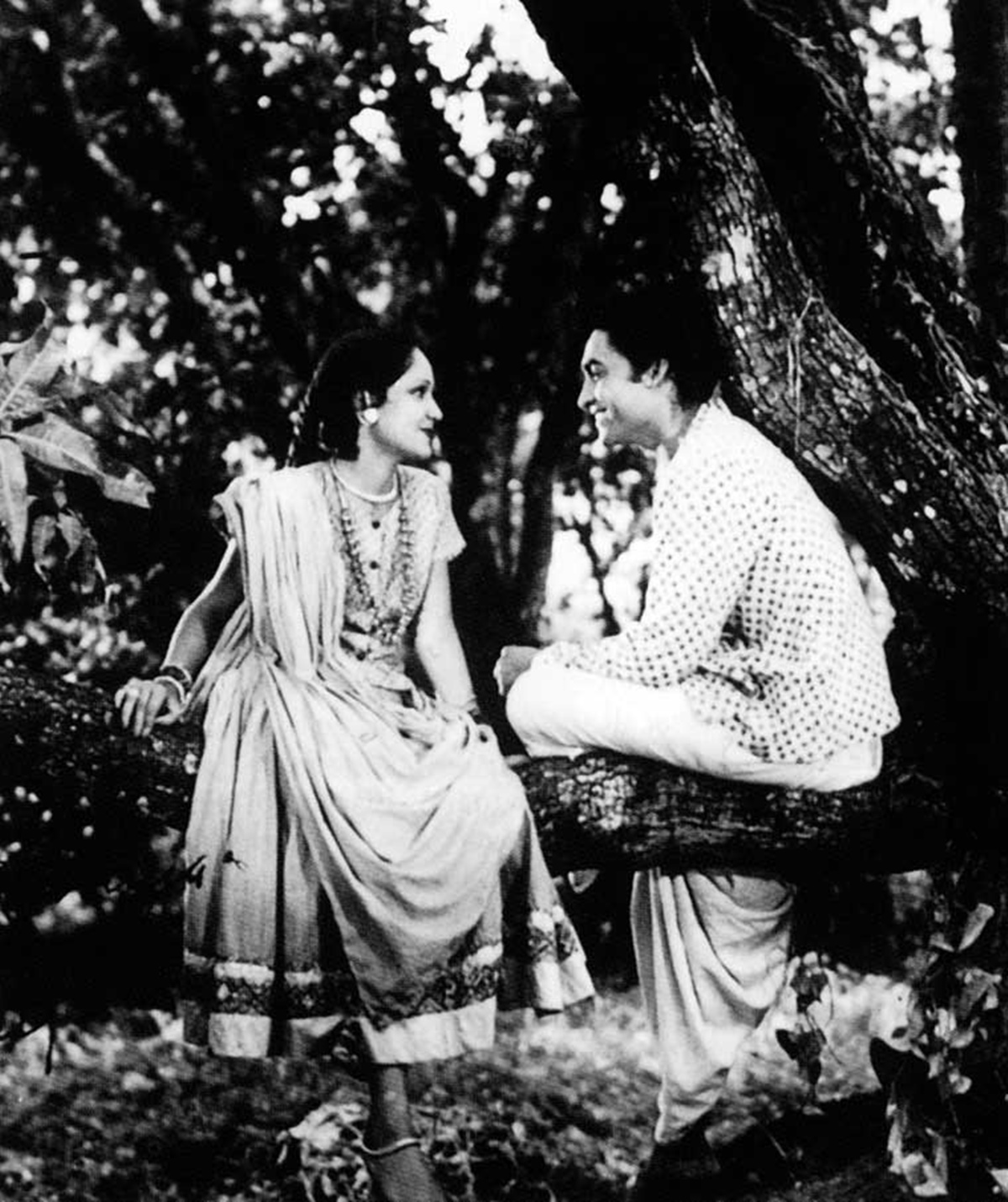 Devika Rani and Ashok Kumar in Achhut Kannya.
Devika Rani and Ashok Kumar in Achhut Kannya.
Writing in the Encyclopedia of Hindi Cinema, author Saibal Chatterjee notes that till “the mid-40s, Bombay filmmakers frequently addressed issues pertaining to social injustice and differences of gender, class, region and religion.” It is worth remembering that this is an era that also gave us KA Abbas, Chetan Anand, Balraj Sahni, Dev Anand, Guru Dutt, Bimal Roy, Sahir Ludhianvi, Shailendra and Shankar-Jaikishan who played an integral role in shaping the hopes and aspiration of a newly independent era throughout the 1950s, which is generally considered as the golden age of Hindi cinema. If Gandhian values had driven their predecessors, such as V. Shantaram and Kavi Pradeep (whose rousing Door Hato Aye Duniya Waalo from Kismet attracted the ire of the British regime), it was the Nehruvian commitment of nation-building that fuelled filmmakers and writers of the soul-searching Fifties. Mahatma Gandhi, the great moral soul of an emerging country, was famously averse to the corrupting influences of cinema — the only movie he ever reportedly saw was 1943’s Ram Rajya — but his acolyte and the first Prime Minister of free India held a dramatically opposite view to that of his mentor. Recognising cinema’s increasingly influential role in mass culture, Jawaharlal Nehru, in his inaugural speech at the first International Film Festival of India in 1952, argued that movies “can educate them rightly or wrongly… I mean that they should introduce artistic and aesthetical values in life and encourage the appreciation of beauty in all its aspects.” It is no wonder that the 1950s filmmakers had a field day living out Nehru’s dream but it was the previous decade which truly laid the foundation for this transformation. The generational, cultural, social and political shift heralded new movements and fresh creative energy in cinema that put the national project at the forefront, through entertaining ideas, songs, scripts and moments with varying degrees of success. Hopefully, Vikramaditya Motwane’s Jubilee will inspire younger viewers to dig deeper into these formative chapters of Hindi cinema. Most importantly, it remains to be seen whether it can put the spotlight back on the fabulous Forties.


Photos


- 01
- 02
- 03
- 04
- 05















